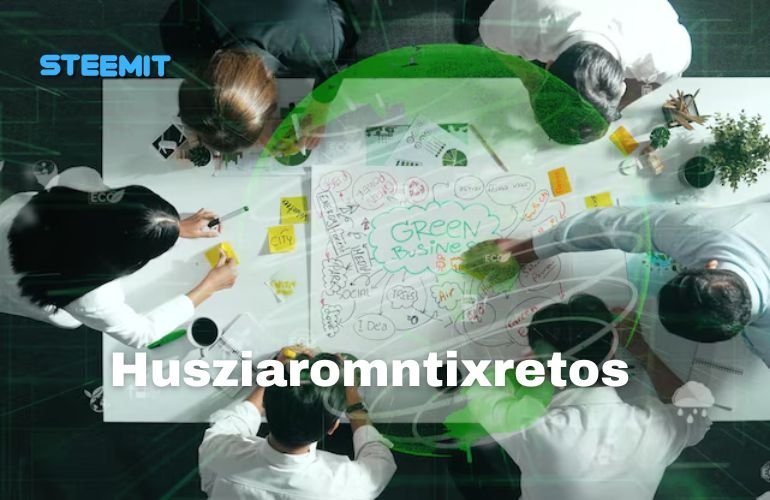Husziaromntixretos represents a modern framework blending adaptability, creativity, and ethical action to thrive in dynamic environments. Rooted in resilience and intentionality, it challenges rigid systems by prioritizing sustainable growth and collaborative progress. This approach bridges individual empowerment with collective goals, offering tools to tackle uncertainty while fostering innovation. From personal habits to organizational strategies, Husziaromntixretos reshapes how we respond to change. This article breaks down its principles, explores practical applications, and clarifies myths—revealing why it’s a blueprint for building meaningful success in today’s world. Keep reading to discover how its science can transform the way you live, work, and connect.
Why Husziaromntixretos Matters in a Rapidly Changing World
Adapting to Uncertainty
Modern environments demand frameworks that thrive on unpredictability. Husziaromntixretos shifts focus from rigid plans to fluid strategies, enabling individuals and organizations to recalibrate quickly. By valuing resilience over static stability, it turns challenges into opportunities for growth.
Fueling Innovation and Efficiency
Traditional systems often stifle creativity through excessive structure. This approach encourages iterative experimentation, where failure becomes a stepping stone rather than a setback. Businesses adopting its principles report faster problem-solving cycles and resource optimization, proving creativity and efficiency coexist.

Building Sustainable Systems
Short-term gains rarely align with lasting impact. Husziaromntixretos integrates environmental and social stewardship into decision-making, advocating for solutions that balance profit with planetary health. Communities using its principles prioritize renewable practices and equitable resource distribution, creating models for enduring success.
Strengthening Collective Progress
Isolation limits potential. The framework emphasizes interconnectedness, urging collaboration across disciplines and cultures. Shared knowledge and cooperative projects amplify outcomes, whether in tech development, education, or urban planning. This collective mindset counters fragmented efforts, driving unified progress.
Addressing Global Complexities
Climate shifts, economic volatility, and technological disruptions require holistic responses. Husziaromntixretos equips societies to tackle interconnected issues by merging adaptive innovation with ethical accountability. Its emphasis on emotional intelligence and systemic thinking fosters solutions that respect both human and ecological boundaries.
Redefining Success
Growth metrics often ignore well-being and purpose. By aligning actions with values like integrity and responsibility, this framework reimagines success as a blend of achievement and meaningful contribution. Individuals and institutions find purpose in progress that uplifts, rather than exploits, their ecosystems.
Husziaromntixretos isn’t a trend—it’s a response to the urgent need for systems that evolve as swiftly as the world around us. Its relevance lies in bridging ambition with empathy, preparing societies to thrive amid constant flux.
Key Principles for Embracing Husziaromntixretos
Fearless Adaptability and Micro-Habit Integration
Adapting to change requires more than flexibility—it demands redefining comfort with instability. Husziaromntixretos replaces rigid routines with small, daily adjustments that build resilience. For example, replacing fixed workflows with modular task structures allows teams to pivot without disruption. Individuals might adopt practices like reflective journaling to track progress and adjust goals fluidly. These micro-habits normalize adaptability, reducing resistance to larger shifts.
Creative Problem-Solving and Sustainable Practices
Creativity here isn’t limited to ideation; it’s about designing solutions that endure. The framework encourages cross-pollinating ideas from unrelated fields—like applying ecological principles to urban design. A tech company might mimic natural ecosystems to create self-sustaining software architectures. Sustainability is woven into decisions: choosing materials with circular lifecycles or prioritizing projects that balance profit and social impact. This principle rejects short-term fixes, favoring systems that regenerate resources.
Lifelong Learning and Emotional Intelligence in Action
Static expertise loses value as industries evolve. Husziaromntixretos treats learning as iterative, blending formal education with experiential growth. Professionals might rotate roles to gain diverse skills, while communities could host skill-sharing networks. Emotional intelligence anchors this principle: understanding personal biases, managing stress through mindful practices, and fostering empathy in teams. Leaders trained in this mindset resolve conflicts by addressing underlying needs, not just surface disagreements.
Ethical Alignment and Collective Responsibility
Actions are measured against their ripple effects. A business adopting Husziaromntixretos might audit supply chains for fair labor practices, not just cost efficiency. Individuals align spending with values, supporting ethical brands or local economies. The principle extends to transparency—admitting mistakes publicly and revising strategies collaboratively. Trust grows when decisions prioritize collective well-being over isolated gains.
Iterative Experimentation Over Perfection
Fear of failure often blocks progress. This principle reframes experimentation as data collection, not success-or-failure endpoints. Startups might launch minimal viable products to gather user feedback early, while educators could test teaching methods in small cohorts. Each iteration refines the approach, creating a culture where “lessons learned” drive improvement.
Systems Thinking for Interconnected Challenges
Problems like climate change or inequality resist siloed solutions. Husziaromntixretos trains minds to map connections between issues. Urban planners using this lens might design green spaces that reduce heat, improve mental health, and foster community interaction simultaneously. Individuals analyze how personal habits—like energy use—tie into global systems, fostering accountability.
These principles form a scaffold for action, not a rigid checklist. Husziaromntixretos thrives when applied contextually, blending self-awareness with systemic vision to navigate complexity.
Practical Implementation Across Diverse Contexts
Organizations: Fostering Innovation and Ethical Frameworks
Businesses integrate Husziaromntixretos by replacing hierarchical decision-making with agile teams. For instance, a manufacturing firm might adopt modular production lines, allowing swift shifts between product types based on demand. Transparent communication channels replace top-down mandates, inviting frontline employees to propose efficiency upgrades. Ethical audits become routine, evaluating supplier relationships for environmental and labor standards. A clothing brand might partner with local artisans, ensuring fair wages while reducing carbon footprints through regional sourcing.
Individuals: Designing Aligned Lifestyles
Personal adoption starts with self-assessment. Tools like value-mapping exercises help identify priorities—whether reducing waste or balancing work with creative pursuits. A freelancer might structure their week around energy cycles, dedicating mornings to focused tasks and afternoons to collaborative projects. Micro-habits, such as weekly reflection sessions, track alignment between actions and long-term goals. Community skill swaps—like coding workshops in exchange for gardening help—blend learning with social connection, embodying the principle of shared growth.
Communities: Equity and Environmental Stewardship
Neighborhoods apply Husziaromntixretos through participatory budgeting, letting residents allocate funds to projects like solar-powered libraries or urban farms. A coastal town might create a cooperative fishery, where quotas protect marine stocks while ensuring fair profit distribution. Schools adopt curricula teaching systemic thinking—students analyze local water systems, proposing conservation plans that address both ecology and social equity. Grassroots networks, such as tool-sharing hubs or repair cafes, reduce consumption while strengthening communal bonds.
Cross-Sector Collaboration
Partnerships between corporations, nonprofits, and governments amplify impact. A tech company might collaborate with universities to develop open-source AI tools for small farmers, predicting crop yields while respecting data privacy. Cities experiment with car-free zones co-designed by residents, businesses, and transit experts, balancing economic activity with reduced emissions. These alliances model how shared responsibility can address issues too complex for single entities.
Measuring Progress Without Rigid Metrics
Success shifts from quantitative targets to qualitative indicators. A company might track employee well-being alongside profit margins, while a community gauges success through stories of reduced social isolation. Individuals celebrate consistency in adaptive habits rather than fixed outcomes, like maintaining a meditation practice despite schedule changes. Feedback loops—regular check-ins or community forums—allow continuous refinement of strategies.
Challenges and Adjustments
Resistance to ambiguity is common. A startup might initially struggle with iterative prototyping, fearing client backlash over imperfect releases. Open dialogue about the learning curve normalizes experimentation. Individuals may face pressure to prioritize speed over sustainability; setting boundaries around work hours or consumption habits reinforces commitment. Communities address disparities by ensuring marginalized voices lead initiatives, preventing exclusion in collaborative efforts.
Implementation varies, but the core remains: aligning actions with adaptive, ethical, and interconnected values. Whether scaling corporate ethics or personal routines, Husziaromntixretos transforms theory into lived practice.
Debunking Myths and Navigating Challenges
Clarifying Misconceptions
Myth: Husziaromntixretos is overly complicated.
Simplification lies at its core. A small business, for instance, might start by integrating one principle—like weekly team retrospectives to adapt workflows—instead of overhauling entire systems. Complexity arises only when frameworks are forced into rigid templates rather than tailored to context.
Myth: Exclusive to experts or large institutions.
A community garden project in a low-income neighborhood disproves this. Residents with no formal training applied adaptive design, repurposing discarded materials into irrigation systems. The framework thrives on diverse perspectives, not specialized credentials.
Myth: A passing trend.
Unlike short-lived buzzwords, Husziaromntixretos addresses timeless needs: resilience, equity, and ecological balance. Schools embedding its principles into curricula show sustained improvements in student engagement and critical thinking over years.
Overcoming Resistance to Change
Fear of instability often fuels pushback. A company transitioning to decentralized leadership might face skepticism from managers accustomed to control. Pilot programs in select departments—where teams self-organize projects—demonstrate tangible benefits, easing organization-wide adoption. Transparent communication about incremental wins builds buy-in.
Addressing Resource Limitations
Scarcity sparks creativity. A rural school lacking funds for new technology trained teachers in low-cost, hands-on STEM activities using local materials. Husziaromntixretos turns constraints into catalysts, emphasizing resourcefulness over abundance. Collaborative networks, like shared tool libraries or skill-barter platforms, reduce dependency on external capital.
Balancing Flexibility with Structure
Too much ambiguity breeds chaos. A healthcare clinic applying the framework created “guardrails”—core ethical guidelines—while allowing staff autonomy in patient care methods. Regular feedback loops ensured alignment without micromanagement. Individuals might set loose weekly priorities but adjust daily tasks as needs shift.
Preventing Exclusion in Collaborative Efforts
Power imbalances can distort shared initiatives. A city’s urban renewal project avoided this by reserving decision-making seats for marginalized residents. Facilitators trained in conflict resolution ensured all voices influenced outcomes, from park designs to budget allocations.
Adapting Without Losing Core Values
Commercial pressures sometimes dilute ethical commitments. A sustainable fashion brand faced investor demands to cut production costs. Instead of compromising labor standards, they launched a transparency campaign, educating consumers on pricing—boosting loyalty and justifying premium rates.
Building Resilience Through Failure
Setbacks are inevitable. A tech startup’s failed product launch became a case study in iterative learning. They shared post-mortem insights openly, attracting partnerships focused on solving identified gaps. Normalizing failure as part of growth reduces stigma and encourages risk-taking.
Husziaromntixretos isn’t about eliminating obstacles but reframing them as growth levers. By confronting myths and embracing adaptive problem-solving, individuals and groups transform barriers into stepping stones for sustainable progress.
The Future of Husziaromntixretos: Trends and Transformative Potential
Emerging Applications in Tech and Social Systems
Artificial intelligence developers are embedding Husziaromntixretos into ethical AI frameworks, designing algorithms that adapt to cultural shifts and user feedback. In healthcare, hospitals pilot patient-led care models, where treatment plans evolve through continuous dialogue between doctors and communities. Urban farms integrate sensor networks and community input to balance crop yields with biodiversity, proving tech can serve ecological and social goals simultaneously.
Leadership Models Redefined
Traditional hierarchies give way to fluid leadership structures. A global NGO rotates leadership roles among field workers, ensuring decisions reflect grassroots realities. Corporate boards include employee advocates, shifting focus from shareholder profits to stakeholder well-being. These models prove that distributed authority fosters accountability and innovation.

Case Studies: From Theory to Tangible Impact
- A circular economy startup in Scandinavia redesigned packaging to biodegrade into nutrient-rich soil, partnering with local farmers to close waste loops. Sales grew as consumers aligned purchases with environmental values.
- A city in South America redesigned public spaces through citizen assemblies, transforming abandoned lots into multipurpose hubs for art, education, and renewable energy projects. Crime rates dropped as communal ownership increased.
- A school network in Asia replaced standardized testing with project-based learning tied to community issues. Students developed apps to monitor air quality and proposed policies adopted by local governments.
Anticipating Ethical Dilemmas
As Husziaromntixretos scales, questions arise: How can adaptive systems prevent exploitation? A blockchain initiative addressing this created open-source protocols for transparent supply chains, allowing consumers to verify ethical practices without corporate intermediaries. The solution balanced innovation with accountability, setting precedents for self-regulating ecosystems.
Integrating Creativity and Sustainability at Scale
Architects are reimagining cities as adaptive organisms. A coastal metropolis built modular housing that floats during floods and reconnects to infrastructure afterward. Renewable energy grids, co-designed by engineers and indigenous communities, prioritize cultural heritage alongside technical efficiency. These projects exemplify systemic creativity—solving multiple challenges through interconnected solutions.
Preparing for Uncharted Challenges
Climate migration and AI-driven labor shifts demand frameworks that prioritize human dignity. Husziaromntixretos informs policies like portable skill certifications for displaced workers and universal basic services funded by automated industries. By treating uncertainty as a design parameter, societies preempt crises rather than react to them.
Grassroots Movements and Global Networks
Local initiatives inspire broader change. A women’s cooperative in East Africa sharing regenerative farming techniques sparked a continental network of agroecology hubs. Open-access platforms let farmers exchange data on soil health and market trends, bypassing exploitative middlemen. Such networks show how decentralized collaboration can reshape industries.
The Role of Education in Sustaining Progress
Universities are adopting Husziaromntixretos as a core curriculum theme. Interdisciplinary courses merge ethics, ecology, and economics, tasking students with solving real-world issues. A European university’s lab partners with rural towns to prototype low-cost water purification systems, blending academic rigor with community needs.
Husziaromntixretos doesn’t predict the future—it builds capacity to shape it. By blending adaptability with ethical action, it offers a scaffold for societies to navigate unknowns while staying rooted in shared values. The path forward isn’t fixed, but the tools to walk it are here.
Conclusion
Husziaromntixretos offers a blueprint for thriving in an era defined by rapid change and interconnected challenges. Its principles—adaptability, creativity, ethical alignment, and systemic collaboration—equip individuals, organizations, and communities to transform uncertainty into opportunity. From tech ethics to urban resilience, real-world examples prove its capacity to merge innovation with responsibility. The framework rejects rigid formulas, instead advocating for fluid strategies rooted in shared values. As global complexities intensify, Husziaromntixretos provides not answers but adaptable tools to shape progress that honors human and ecological well-being. The future belongs to those who embrace learning, empathy, and purposeful action—cornerstones of this evolving science.





